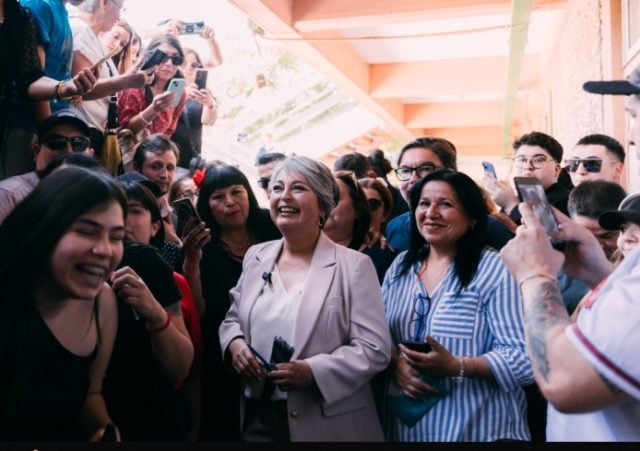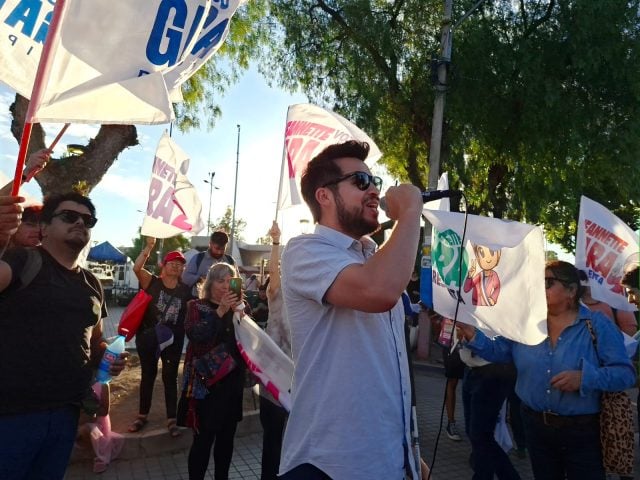Original article: 13 partidos al borde de desaparecer: revisa cuáles no alcanzaron el mínimo legal de votos
The recent elections did not just determine the new members of Congress; they put 13 political parties at risk of disappearing for failing to meet the minimum legal vote requirements. This blow affects historic parties, emerging forces, and those aiming to establish themselves as alternatives within the right and center of the political spectrum.
According to the Constitutional Organic Law (N° 18.603), political parties will be dissolved «if they do not reach 5 percent of the validly cast votes in the last congressional election in at least eight regions or in each of at least three contiguous geographical regions«. The law also provides a second avenue for survival: «as long as they elect a minimum of four parliamentarians in at least two different regions, whether they be deputies or senators».
With the results from the Electoral Service (Servel) now available, the outlook is grim for 13 parties: Acción Humanista, Federación Regionalista Verde Social (FRVS), Partido Radical, Demócratas, Evópoli, Amarillos por Chile, Partido Social Cristiano, Partido de Trabajadores Revolucionarios, Partido Popular, Partido Humanista, Igualdad, Alianza Verde Popular y Ecologista Verde. All of these entities fell below the required thresholds or failed to elect the necessary number of representatives to avoid dissolution.
The 13 Political Parties on the Verge of Dissolution
The situation for Acción Humanista and the Federación Regionalista Verde Social (FRVS) was a foreseeable risk. Both parties chose to run separately from the rest of the left, which was united under the Coalition for Chile, and they were aware that this could have significant consequences. Ultimately, Acción Humanista managed to secure only one seat in the Chamber, with the reelection of Ana María Gazmuri.
Meanwhile, the FRVS managed to elect three members: Jaime Mulet, René Alinco, and Miguel Ángel Calisto, the latter now moving to the Senate. However, this outcome does not meet the legal requirements for continuing as a national party.
The Partido Radical faced a similar fate. Out of its 23 candidates, only Marcela Hernando and Consuelo Veloso were elected, capturing only 1.99% of the national vote. The potential dissolution of PR goes beyond a mere administrative detail; it signifies the terminal crisis of one of Chile’s most traditional parties, which has held the presidency three times and governed for 14 years in the 20th century.
Democrats and Evópoli: Bitter Outcomes in the Center and Liberal Right
The situation for Demócratas is also disheartening. The centrist party secured two seats: Joanna Pérez, who was reelected from District 21, and Enrique Lee, who will debut in the Senate representing the Arica and Parinacota region. Despite this achievement, the party does not meet the minimum requirements to avoid being counted among the 13 political parties at risk of disappearing.
In Evópoli, the bad news is twofold. Not only did their presidential candidate, Evelyn Matthei, fail to reach the second round, but the liberal-right party also could not secure its legal continuation. With around 70% of the votes counted, Evópoli managed to secure only two positions in the Chamber of Deputies, with Jorge Guzmán and Tomás Kast, while failing to gain any senators. This result fell far short of the expectations held by a party aiming to be a pivotal player in the sector.
Furthermore, Amarillos por Chile faced disappointing outcomes, with none of its seven candidates elected to the Chamber, achieving only 0.72% of the national vote, far below the 5% threshold required by law to remain active.
The Case of the Christian Social Party and Other Groups
The Partido Social Cristiano managed to elect three deputies: Sara Concha, Francesca Muñoz, and Roberto Arroyo. However, these three seats are insufficient to meet the requirement of electing at least four parliamentarians across two different regions, placing them in the same precarious situation regarding possible dissolution.
Smaller parties find themselves in a similar predicament, unable to convert their visibility in protests, sectoral campaigns, or social media into votes: the Partido de Trabajadores Revolucionarios, Partido Popular, Igualdad, Alianza Verde Popular, and the Ecologista Verde also failed to reach the legal minimum.
With this landscape, Chile’s political map is heading towards a significant pruning of party identifiers: fewer logos on ballots, less individual representation, and, theoretically, a less fragmented party system… at least on paper.
Fusion or Extinction: What Options Remain for At-Risk Parties
The law not only sets thresholds but also offers a potential escape route: mergers. One way to avoid dissolution is for two or more parties to unite into a single entity. This is what occurred in 2024 when Convergencia Social and Revolución Democrática chose to merge into a single party known as Frente Amplio.
With the threat of 13 political parties on the verge of disappearing being removed from the Servel registry, voices advocating for significant realignments are already being heard. Senator Luciano Cruz-Coke (Evópoli) and newly elected deputy and senator from RN Andrés Longton have hinted in interviews that they would not oppose the idea of parties from Chile Vamos merging into a single large coalition.
However, this idea is far from a consensus: the president of UDI, Guillermo Ramírez, outright rejected it in public statements, defending the unique identity of his party against any push for a «single party» approach on the right.
For now, the future lies in the hands of party leaders and their members: they can either seek merger agreements that allow them to remain active in the political landscape or resign themselves to the likelihood that the next electoral cycle will feature a party system with fewer identifiers and, perhaps, diminished opportunities for smaller initiatives that fail to surpass the 5% threshold.











